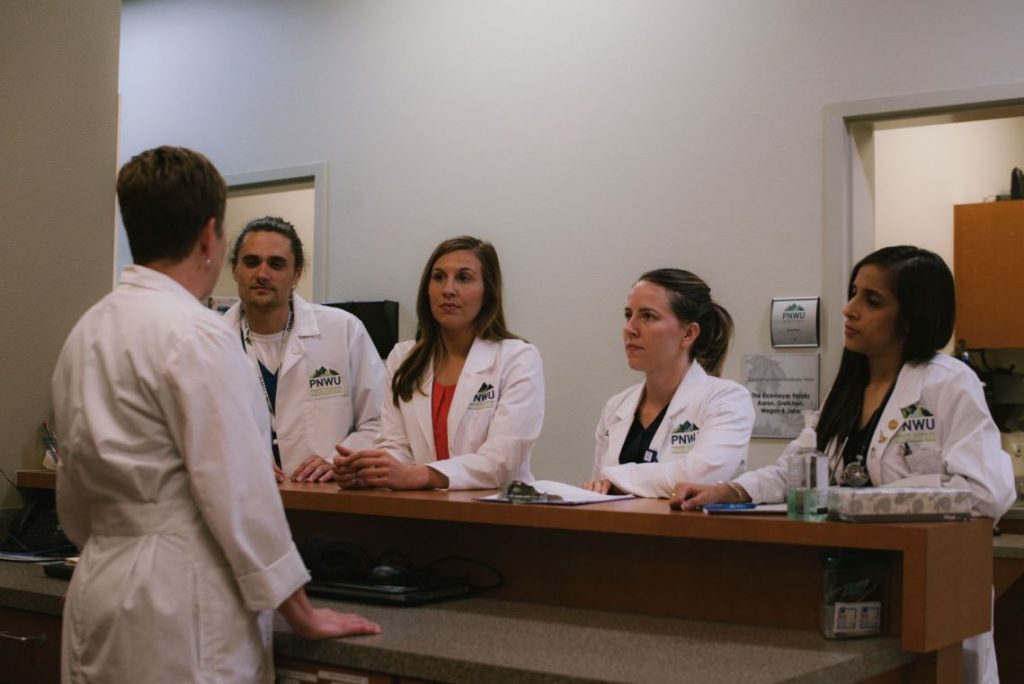Providing feedback is the best way to improve a learner’s performance, is the most commonly sought-after component of clinical education experiences, and is a mechanism for communicating strengths and areas for improvement. Feedback includes components of a learner’s self-assessment, the preceptor’s observations, and the mechanisms for improvement.

The goal is to provide appropriate feedback. Specific competencies within this domain include:
- Solicit student self-assessment
- Provide timely formative and actionable feedback to the learner regarding their progress
- Check that formative feedback was heard and understood and that the learner initiated a feasible action plan
- Provide summative feedback to the learner and the medical institution
Assessing students with the Entrustable Professional Activities (EPAs)
- The 13 Entrustable Professional Activities (EPAs) for Entering Residency were first developed by the American Association of Medical Colleges (AAMC) in 2014 and further extended in the same year by the American Association of Colleges of Osteopathic Medicine (AACOM) to include osteopathic considerations and perspectives. The EPAs are a list of clinical activities that all medical school graduates should be able to perform independently upon entering residency, describing observable, measurable units of work that integrate multiple competencies. For more detailed information please see AACOMs document “Osteopathic Considerations for Core Entrustable Professional Activities for Entering Residency.”
- PNWU incorporates EPAs into our post-rotation evaluation tool. Improvements in the evaluation process transitioning from competency-based to EPA-based include:
- Improving students’ performance and better prepare them for residency
- Delivering objective information about performance to students and potential residency directors
- Making the evaluation easier for preceptors to complete
- EPA Frequently Asked Questions Sheet
- PNWU incorporates EPAs into our post-rotation evaluation tool. Improvements in the evaluation process transitioning from competency-based to EPA-based include:
- Professionalism statements and suggestions
- Giving Feedback: Does a Spoonful of Sugar Help the Medicine Go Down?
- RIME model for determining learner’s expected level of performance
- This model, developed by Drs. Sepdham, Julka, Hofmann, and Dobbie and published in Family Medicine in 2007, provides a basic framework for assessing the learner by describing the stages of performance according to general activities undertaken by learners at specific levels
- RIME stands for:
- Reporter: usually understands the “what” and can report back the situation and context, applies to early medical students (approximately MS 3)
- Interpreter: usually understands the “why” and can develop ideas and plans about the condition and the patient, applies to later medical students (approximately MS 4)
- Manager: understands the “how” of addressing a problem and can initiate treatment strategies, applies to early residents (approximately intern level)
- Educator: implies an expert knowledge, and commitment to education of both self and the team, applies to more senior residents
Clinical Faculty Development Handbook
Teaching Competencies for Community Preceptors
Renewable Resources for Preceptors
Providing Learner-Focused Education
Teaching Interpersonal and Communication Skills
Developing Professionalism by Role Modeling
Focusing on Practice-based Reflection and Improvement
Completing Learner Assessments
JiTT Infographic App
College of Osteopathic Medicine
COM Mission & Strategic Plan
COM Administration
Faculty
Academic Departments
Department Updates
Academic Resources
Clinical Education
Curriculum
Graduate Medical Education
What is a DO?
White Coat Ceremony Information
White Coat Livestream
Clinical Education Syllabi
Clinical Faculty Development Handbook
Clinical Faculty Application
Clinical Preceptor Guide
Master Preceptor Fellowship
Request Information
Preceptor Stipend FAQ
Become a Clinical Faculty Member
Preceptor’s Lounge
States Approved for Clinical Rotations
Contact Information
Iron Horse Lodge
111 University Parkway
Yakima, WA 98901
Mary Baker
Administrative Specialist
509-249-7991
mbaker@pnwu.edu